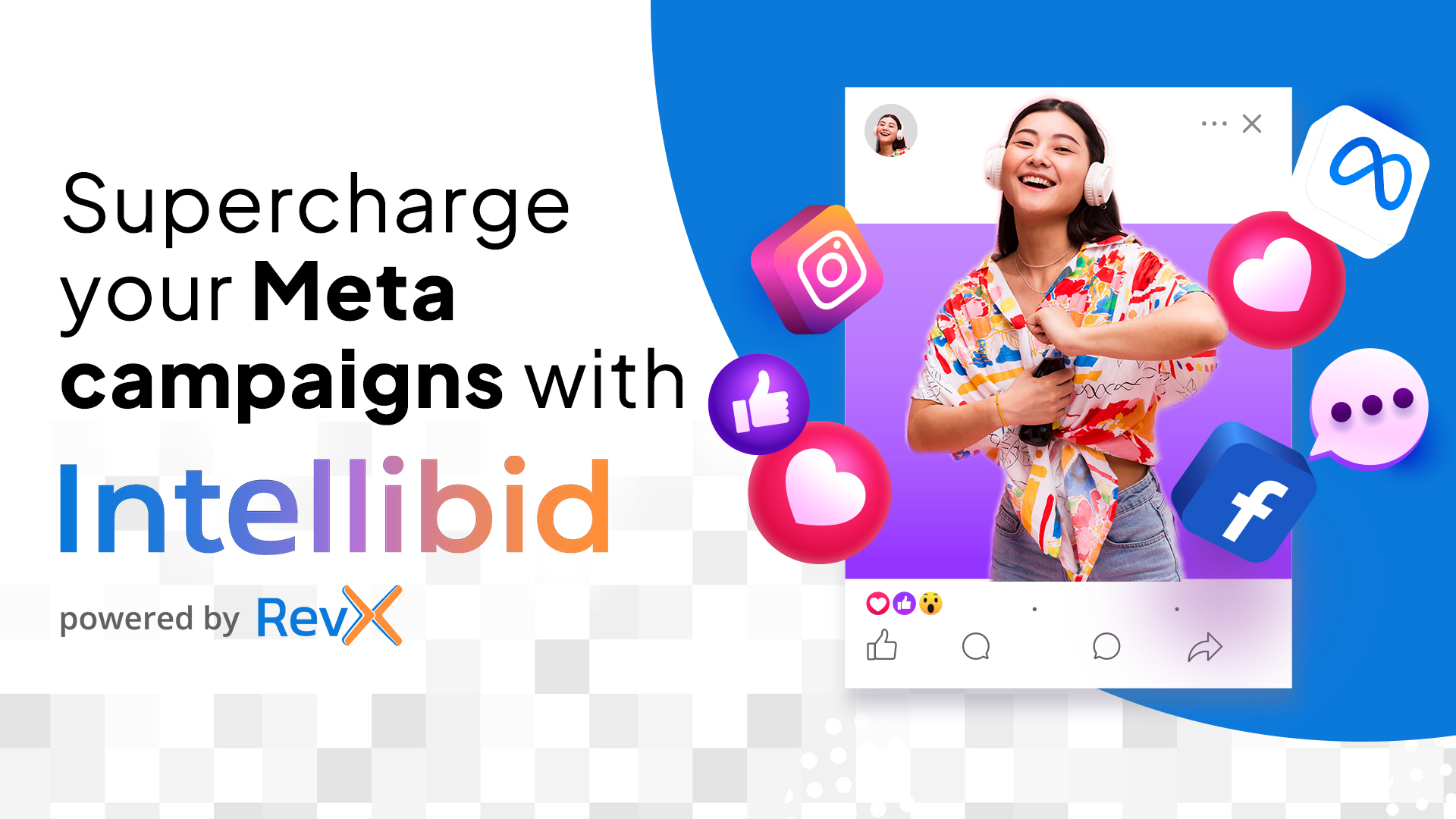The shockwaves of Apple’s privacy changes were long announced, and the most prepared players in the industry, attribution partners, and programmatic platforms alike, are now ready to face the new landscape with concrete solutions.
For mobile advertisers, the reaction to these changes brought by the curbing of device IDs on iOS varies greatly. Many are still working on amending their advertising strategies and finding out what best would work for their app businesses.
RevX and Adjust combine their efforts to provide advertisers with a clearer lay of the land of where data privacy is going and how to adapt programmatic campaign strategies to face a new reality. Read on.
Assessing the status quo – Post-iOS 14.5 insights
Implications of SKAN & attribution models
The most effective way to work with SKAdNetwork is to build a conversion value model designed to take advantage of the first 24 hours – how you set up this strategy will be the key to your success. Marketers and developers should ensure that they’re leveraging all attribution data available in this window to its full potential, and that means developing a granular understanding of user behavior. Designing a unique, intelligent algorithm that packs as much information as possible is generally the best way to gather as much data as possible – but it’s essential to only include events or key event ranges that are triggered within 24 hours. For many apps, this means focusing on events they wouldn’t previously have tracked and using predictive modeling to understand which first-24-hour events lead to high LTV users.
We recommend setting SKAdNetwork as the default for billing across all channels. Given that self-attributing networks will use SKAdNetwork for attribution, this is the only way to avoid duplication rates.
However, SKAdNetwork is also quite susceptible to fraud (as it is currently returning attribution for whatever it sees as a click). We therefore advise focusing on sources that can scale – the largest platforms, network partners, and DSPs.
Impact on opt-ins, CPMs, ad revenue, duplication, consent rates
From the moment the iOS 14.5 update went live, we’ve been closely monitoring our data to gain a clear picture of changes and trends. Regarding consent rates, we took a look at AppLovin’s owned studios data and found that the results are far more optimistic than some discussion in the industry has suggested. While the ‘5%’ figure presents itself regularly, the app with the lowest consent rate we found was 30.64%, while the best result was as high as 74.74%. We found that apps with higher install rates from advertisements have materially higher consent rates because consumers finding these games through ads are inherently more interested in seeing further relevant advertisements. We predict that consent rates will continue to rise to an average of around 40% – with the possibility of reaching 50% over time.
Regarding ad revenue, the impact appears to be minor if not non-existent. Looking, for example, at the meditation app MAX, we see that of the non-opted-in iOS 14.5 users, CPM drops by ~30% (lower than the industry prediction of 50%), but that this is completely offset by the higher CPMs yielded by opted-in iOS and Android users. These initial findings are strong indicators that our industry will continue its rapid growth and that the mobile ad ecosystem will continue to flourish.
Opt-in design dos and don’ts.
App developers have one chance to trigger the Apple consent pop-up in their app, meaning it’s crucial to optimize towards getting the opt-in. At Adjust, we did extensive research on how to craft successful opt-in prompts, and we highly recommend that brands use a pre-permission prompt to request consent prior to triggering the iOS pop-up. At this stage, you should clearly tell your users that they should give consent, clearly communicate where to do so, and minimize any possible distractions on the screen. Design an aesthetically pleasing screen that clearly communicates the advantage of giving consent and prevents automatic rejection by speaking honestly and using clear language.
🔹 Don’t: see dark patterns: defined by London-based UX designer Harry Brignull, these are instances where designers use their understanding of human behavior to influence user end decisions – they use design psychology to subconsciously coerce users into giving an opt-in. These include nagging, obstruction, sneaking, interface interference, and forced action. You can learn more about them here.
🔹 Do: pinpoint the exact moment in your user journey to serve your opt-in request – the most successful prompts are displayed during the onboarding flow.
🔹 Do: focus on messaging. Users are looking for direct, personal value. Demonstrate what content your app offers to them as an individual within 2-3 succinct sentences. Opt to use the fewest words to say the most and to choose the easiest words to read and understand.
🔹 Do: optimize the size. Users respond better to pre-permission prompts that are full-screen. Modal screens are more likely to be seen as an interruption.
🔹 Do: get the button size right. The placement of your call-to-action button is an easy way to get more opt-ins. Using straightforward terms like ‘later’ and ‘next’ horizontally next to one another, and in that order, prompts users to take an affirmative action.
Whether you’ve already started testing or are beginning to devise an opt-in strategy now, we encourage all developers to consistently A/B test and utilize the trends and learnings we’ve identified.
Programmatic campaigns on LAT traffic
Privacy changes in the industry lead us to rethink our approaches to continue serving advertisers in a concrete, meaningful way. No longer can advertisers rely on IDFA to target, optimize, and attribute the results of their campaigns. Campaigns on LAT traffic demand a distinctive and strategic – hence rather long-term – approach.
In programmatic, the way forward is to run blended programmatic campaigns that can still offer incremental results independently of the advertisers’ target audience – LAT and non-LAT.
At RevX, we run PAI (Programmatic App Impact) campaigns. These campaigns are run holistically, with a more encompassing goal of generating awareness, user acquisition, and re-engagement to capture all of the ad campaigns’ positive effects.
PAI campaigns are a better option for advertisers, given that traditional attribution and targeting methods won’t be useful for running deterministic retargeting campaigns. In LAT, advertisers lose the capability of targeting specific users with highly personalized content ads. Advertisers will need users to opt-in on iOS to run retargeting campaigns. Otherwise, the best next option is to run re-engagement campaigns in a blended setting.
Similarly, advertisers need to rely on different attribution methods like SKAN and uplift measurement to get accurate results for user acquisition campaigns.
How to drive impact with programmatic campaigns
Contextual advertising
On LAT or blended traffic, advertisers need to rely heavily on supply signals and make the most out of the available data to run their programmatic campaigns. Since we still lack a more comprehensive range of publisher data points that would submit better-targeting data via bid requests to evaluate impressions, it’s essential to shift our focus to what we can do with the contextual data that we have available at this point.
Behavioral advertising based on contextual data allows for a certain level of personalization and enables targeting of similar audiences without requiring an individual user’s ID. Making the best use of the contextual data available entails having the support of attribution and programmatic partners to analyze all this data available.
Creative strategy
In a LAT or blended traffic scenario, creative innovation becomes the top priority to deliver a strong ad experience and achieve higher performance.
More than ever, and without IDFAs, ad creatives need to be built innovatively and efficiently to capture your wider audience’s attention.
Given that, on LAT traffic, advertisers won’t be able to distinguish between users that have installed their app or not, the creatives need to be appealing to a broader set of users: include a message and CTA that is relevant for the majority of them, focus on attractive ad format and engaging ad elements that can capture their attention.
Also, in this context, running dynamic content optimization using asset feeds and A/B testing will require adaptation. While DCO (Dynamic Creative Optimization) would usually adapt its ad content based on user history of having viewed products, in LAT the future generation of DCOs would have alternative ways of deciding on its dynamic content e.g. publisher, site, time of the day, device type, and geo context.
Campaign measurement
Measuring campaigns’ actual effectiveness on LAT or blended traffic demands a different approach. Advertisers should prepare to optimize their app marketing strategy further by looking for the incremental value brought by each campaign and gathering tangible insights throughout the duration of campaigns.
Uplift measurement based on audience impact will provide advertisers with a broader view of their overall performance based on time-series analysis and synthetic control groups.
A new way of planning your programmatic budgets
These changes caused plenty of advertisers to halt their ad spending on iOS and shift it to audiences with available ID tracking. Although that’s a natural overcautious reaction, it’s not the most beneficial in the mid-to-long term for any app business as it gives too much leeway to its competitors.
We now have a clearer picture of what can be done to sustain a programmatic advertising strategy that yields incremental outcomes.
Programmatic campaigns on LAT users should be built as a broader ad campaign encompassing branding and user acquisition. Advertisers’ budget allocation is subsequently applied to fit “holistic mobile advertising” in a way that is comparable to performance branding campaigns.
Reach out to your attribution and programmatic partner and futureproof your growth trajectory.



